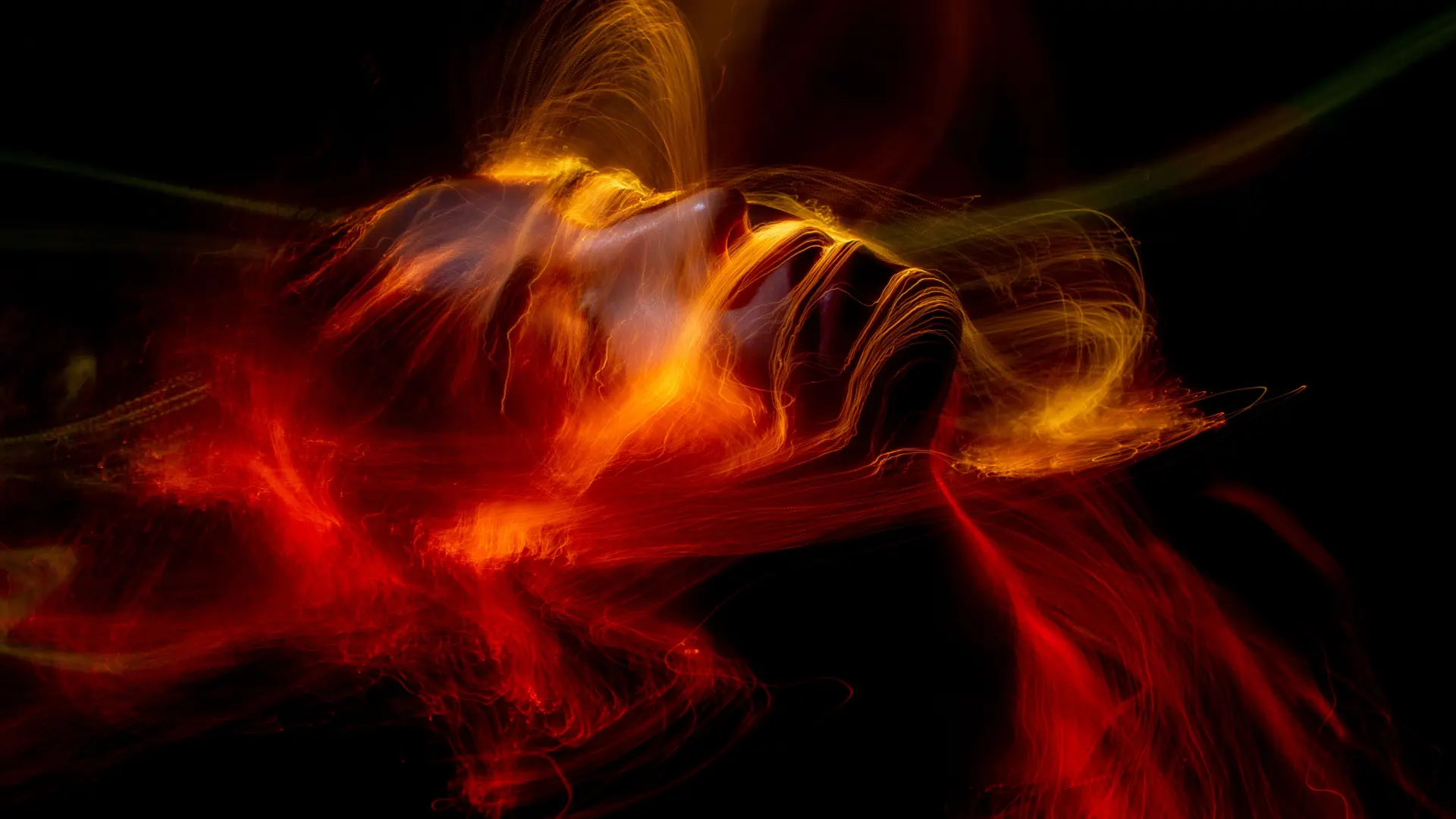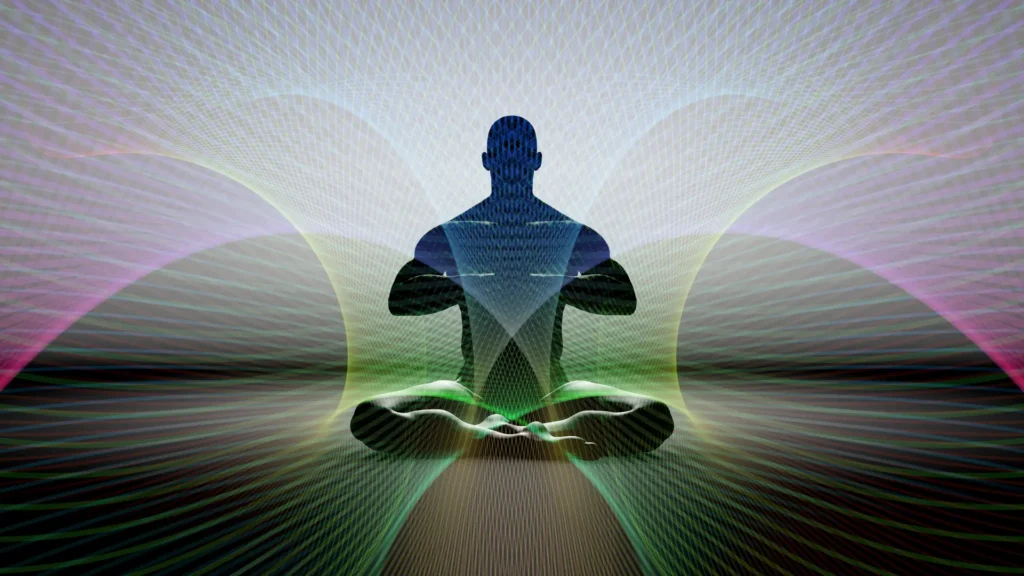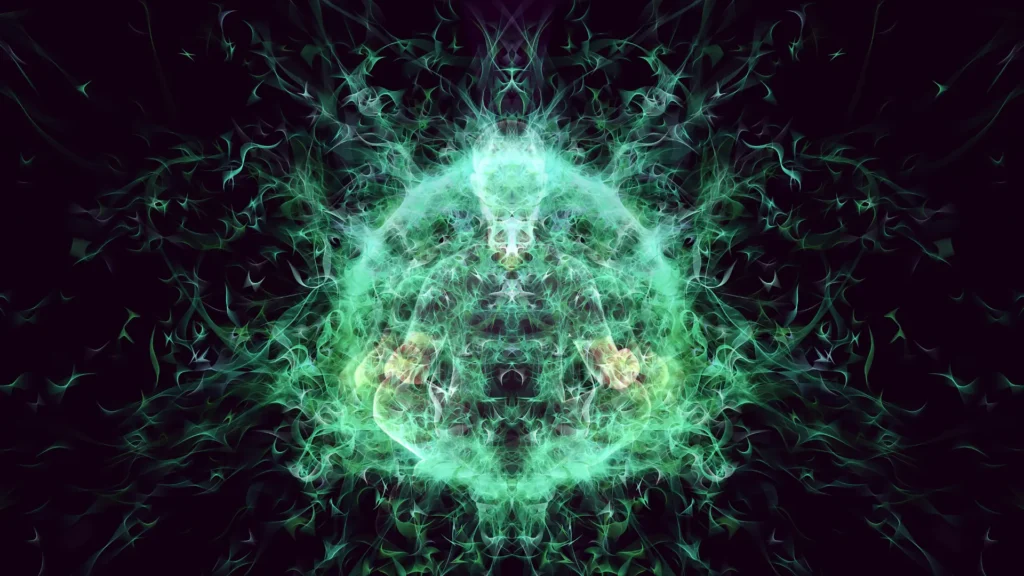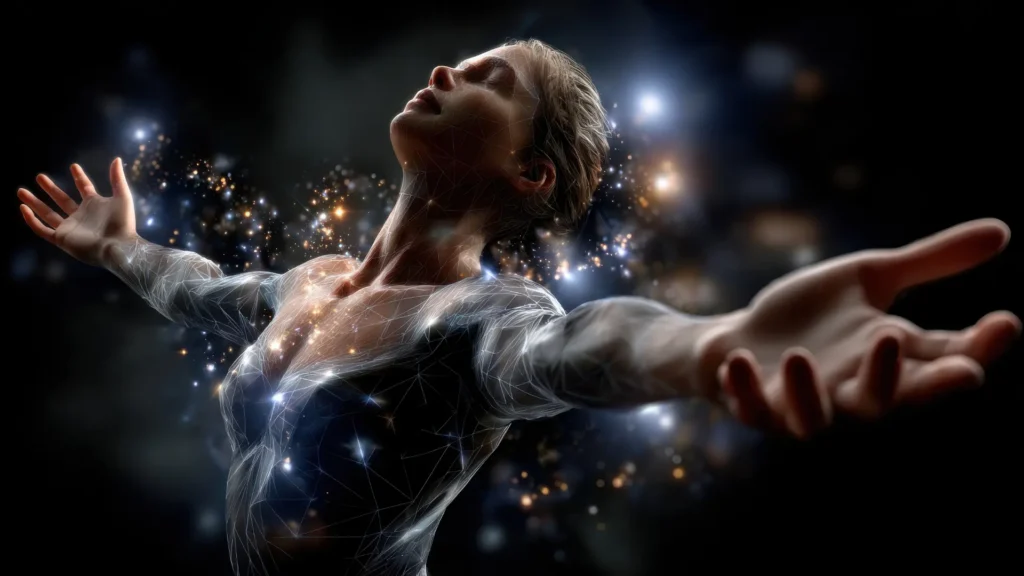You can absolutely learn to perceive your own aura. This ability is not a rare psychic gift but a natural human sense that has become dormant through lack of use. By training your eyes and your energetic sensitivity with simple, consistent exercises, you can reawaken your ability to perceive the subtle biofield that surrounds you.
Seeing vs. Sensing
When learning to perceive the aura, it’s important to understand the difference between seeing and sensing. Seeing involves using your physical eyes in a new way to perceive the subtle light of the energy field. For most beginners, this appears as a transparent or whitish-blue haze, not the vibrant colors seen by experienced clairvoyants. Sensing, or clairsentience, is the ability to feel the energy field directly. For many people, this kinesthetic perception develops even faster than visual perception. Both are equally valid ways of perceiving the aura.
Preparation for Practice
Optimal conditions can significantly accelerate your progress. Find a room with dim, soft lighting, as harsh, bright light can overwhelm the subtle energy. You will also need a plain, neutral-colored background, such as a white or light-gray wall. A busy or patterned background makes it much more difficult to distinguish the aura. Before you begin, take a few deep breaths to calm your mind and enter a relaxed, meditative state.
Exercise 1: The Hand Technique
This is the most common and effective exercise for beginners.
- Sit or stand comfortably in front of your plain background.
- Hold one of your hands out in front of you, about a foot away, with your fingers relaxed.
- Instead of staring directly at your hand, employ a soft gaze. Look at the wall or the space around your hand and fingers. Let your eyes relax and become unfocused. This technique shifts you into your peripheral vision, which is far more sensitive to subtle light and energy.
- Be patient. After 30-60 seconds of maintaining this soft gaze, you may begin to notice a faint, hazy, or transparent field of light, like heat rising from pavement, extending about a quarter to a half-inch from the edge of your hand. This is the first layer of your aura, the etheric body.
Exercise 2: The Mirror Technique
Once you are comfortable with the hand technique, you can move on to viewing the aura around your entire body.
- Stand a few feet in front of a mirror, ensuring the wall behind you is plain and neutral.
- Look at your reflection, but again, use a soft gaze. Do not focus on your own eyes or face. Instead, look at the spot on the wall in the space just above your shoulder or to the side of your head.
- As you hold this relaxed gaze, allow your peripheral vision to take in the outline of your head and shoulders.
- With patience, you will begin to perceive the same subtle, hazy energy field enveloping your body. You may notice it is brighter or thicker in some places than others.
Developing Energetic Sensitivity
You can also learn to perceive the aura through direct sensation. This practice develops your clairsentience, or “clear-feeling.”
- Sit comfortably and rub your hands together vigorously for 20-30 seconds to build up a charge.
- Hold your palms up, facing each other, about a foot apart.
- Very slowly, begin to move your hands closer together.
- Pay close attention to the sensations between your palms. You may feel a subtle pressure, tingling, warmth, or a magnetic push-and-pull sensation. This is you directly feeling the energy of your own biofield.
Common Challenges and Tips
It is common to encounter a few challenges when starting out. The most frequent is confusing the aura with an afterimage. An afterimage is a purely physiological phenomenon where an image is retained by your retina; it will be a complementary color (e.g., looking at a blue object leaves a yellow-orange afterimage) and will move with your eyes as you look around. An aura, however, will typically stay with the object you are viewing and is usually seen as a more subtle, whitish light for beginners. The secret to success is patience and consistency. This is a skill, and like any skill, it requires regular, relaxed practice to develop.



